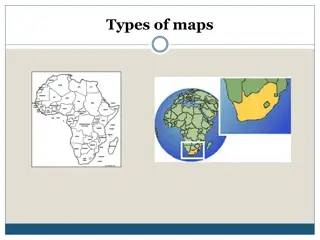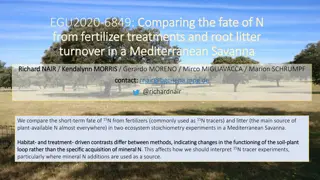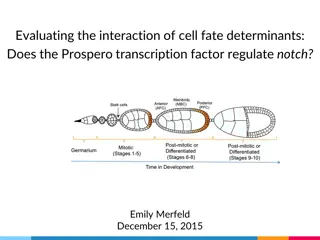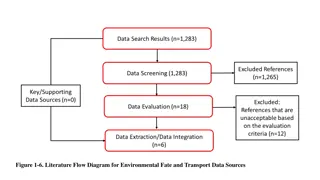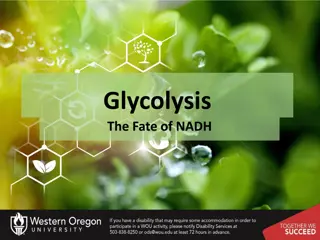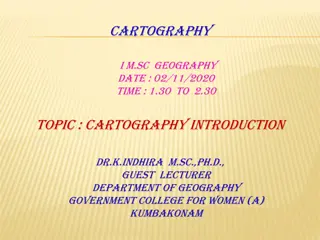
Construction of Fate Maps for Developmental Studies
Explore the methods and techniques used in constructing fate maps to understand the trajectories and fate of cells during development. From natural marking to genetic methods, delve into the intricate process of mapping cell fates in embryos. Discover the significance of presumptive regions and learn about fate maps in organisms like ascidians and Drosophila. Uncover the diverse ways to mark cells, including vital staining, carbon particle marking, and radioactive labeling. Dive into the world of cytological and histochemical methods used for successful fate map construction.
Download Presentation

Please find below an Image/Link to download the presentation.
The content on the website is provided AS IS for your information and personal use only. It may not be sold, licensed, or shared on other websites without obtaining consent from the author. If you encounter any issues during the download, it is possible that the publisher has removed the file from their server.
You are allowed to download the files provided on this website for personal or commercial use, subject to the condition that they are used lawfully. All files are the property of their respective owners.
The content on the website is provided AS IS for your information and personal use only. It may not be sold, licensed, or shared on other websites without obtaining consent from the author.
E N D
Presentation Transcript
Construction of blastula map based on the trajectories of tagged or marked cells. They showed the fate of every region of blastula under normal developmental conditions are referred as fate map . The area of the future germ layers during the blastula stage is referred as presumptive .
Methods of preparation of fate maps Construction of fate map by natural marking Construction of fate map by artificial marking Vital stain marking Carbon particle marking Radioactive labeling method Histochemical and cytological methods Genetic method
Construction of fate map by natural marking The cytoplasm of fertilized eggs of some animals such as ascidian has natural color differences in its various region. On the basis of Pigment differentiation
Construction of fate map by artificial marking Vital stain marking
Carbon particle marking method developed by Spratt in 1946. Tiny particles of carbon applied to the surface of the embryo. Instead of carbon, other type of adhering particles such as chalk can also used. Radioactive labeling method This is doing with the help of autoradiography.
Histochemical and cytological methods Variety of natural markers (specific molecules of cells) used in the fate map construction with success such as: Melanin granules (chick retinal pigment cells) Glycogen (can stained with acid-schiff reagent or PAS) Alkaline phosphatase Such markers reflect metabolic activity of the cell which might change during the observation. Genetic method: This method used in genetic mosaics (gynandromorphs) by Hotta and Benzer (1972) to construct map in Drosophila melanogaster.
Uses of fate maps Following the mechanism of gastrulation. Know the position of local tissues. Cell lineage study (cytogeny)




